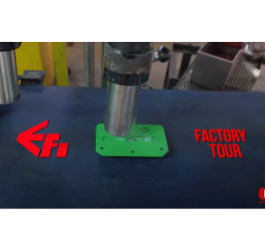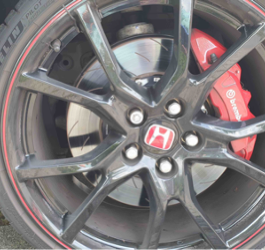EBC Racing SR21 Brake Pads (DP81983.19SR21)
- Sintered endurance race compound
- High torque
- Extremely low pad & rotor wear
SR-21 is the sister compound to SR-11 that employs state-of-the-art sintered friction technology to take cast-iron brake performance to the next level. SR-21 has the widest temperature working range of any material in the EBC range of 0 – 950°C, with a near perfectly flat friction profile of 0.6 mu across its entire operating range. SR-21 is a high-torque material targeted at applications where a high initial bite is desirable, such as vehicles with minimal servo-assistance, racing cars generating significant aero loads or front axle fitments.
SR-21 boasts exceptionally low pad wear, yet unlike some other sintered brake pads on the market, SR-21 also exhibits virtually zero brake rotor wear. SR-21 has been developed and independently tested for use in LM GTE class motorsport and has such low wear it could feasibly complete the 24hrs of Le Mans without a single pad or rotor change. As such, SR-21 is marketed as an endurance grade product, however, SR-21’s very stable performance from cold makes it highly suitable for use in any type of motorsport where cars run a cast-iron brake rotor, including sprint race, circuit racing, Time Attack, rallying, Hillclimb and serious trackday use.
Whilst SR-21’s high initial cost requires a significant up-front investment, the cost-per-racing-mile of EBC’s sintered pads is considerably lower than virtually any other brake pad on sale today, thanks to SR-21’s extraordinary pad and rotor life. Furthermore, whereas many semi-metallic or organic race pads ‘dull off’ after their first heat cycle, SR-21 experiences zero degradation between sessions meaning the same set of pads can provide between 20-60 hours of consistent performance at full racing speed. It is not uncommon for 1 set of SR-21 brake pads to last an entire racing season, with zero drop-off in performance.
Being a sintered metal pad SR-21 also possesses ultra-low compressibility, resulting in a firm pedal with an unrivalled pedal feel. This gives the driver absolute control during each and every braking zone, with even the slightest change in pedal force instantly translating to a proportionate change in torque output.
Despite SR-21 being developed for use at the highest levels of motorsport, SR-21 has reasonable road manors, with full brake effect from cold and less brake noise than typical semi-metallic race pads (although SR-21 is typically noisier than its sister material SR-11). Due to SR-21’s focus purely on motorsport use, this material has not been tested to ECE R90 standards and therefore is not legal for use on public roads in Australia.
Another benefit to SR-21, and a characteristic common to all sintered friction materials, is it has effectively no bedding-in period; requiring only a couple of laps at 80% racing speed to ensure the pads are mated up to the brake rotor. Sintered pads contain no volatiles that could burn, de-gas and lead to ‘green fade’, making SR-21 the ultimate ‘plug n play’ motorsport pad.
SR-21’s extreme fade resistance and huge wear life mean EBC Racing’s sintered endurance race pads really are the Holy Grail for motorsport teams and drivers seeking the pinnacle of braking performance. Quite simply, EBC Racing’s new sintered pad materials are achieving levels of performance previously thought to be impossible on a cast-iron brake rotor.
Want to learn more about sintered pad technology, we’ve written a great blog on this topic which you can read here
NOTE: SR-21’s sister material, SR-11, has a lower friction coefficient of 0.5 for applications where a more benign brake response is desirable, such as vehicles with increased servo-assistance, non-aero racing cars or rear axle fitment. SR-11 has better road manners than SR-21, typically exhibiting less noise and lower brake dust.








Validate your login